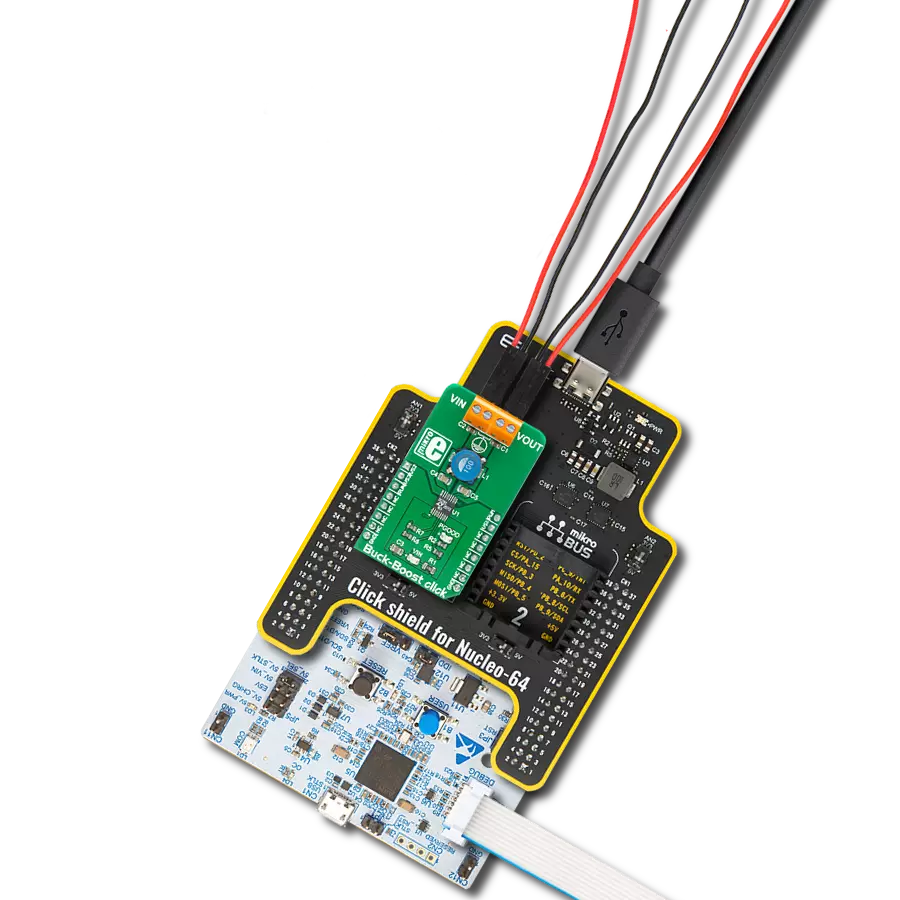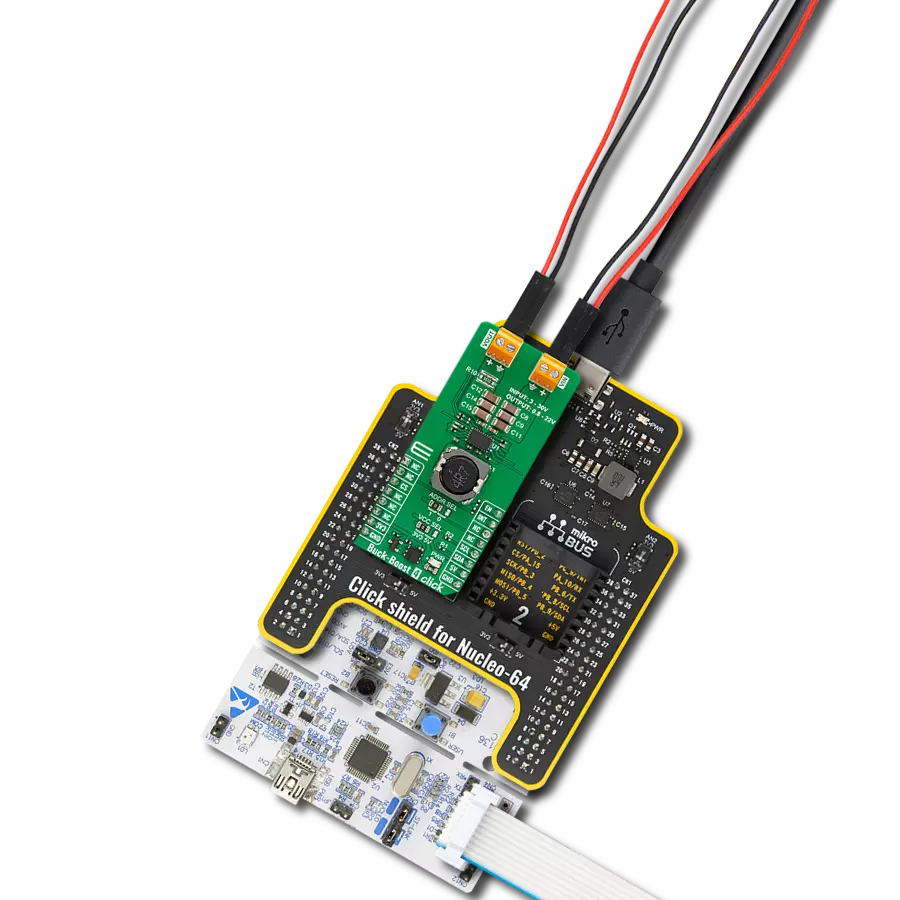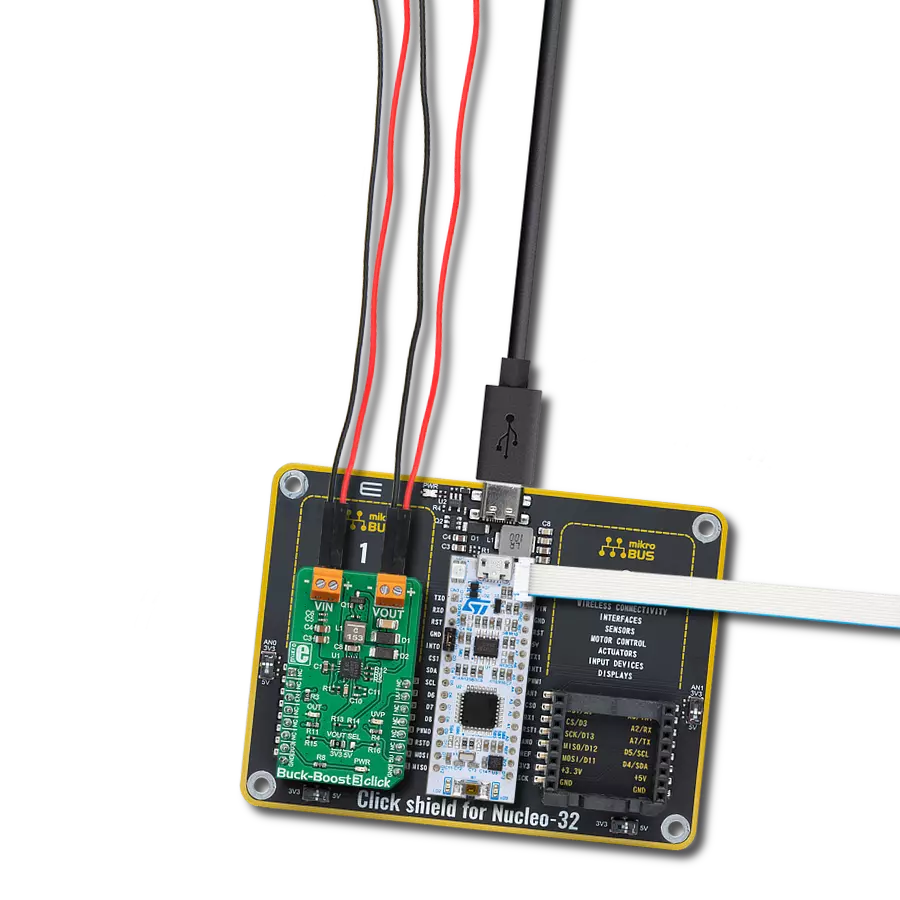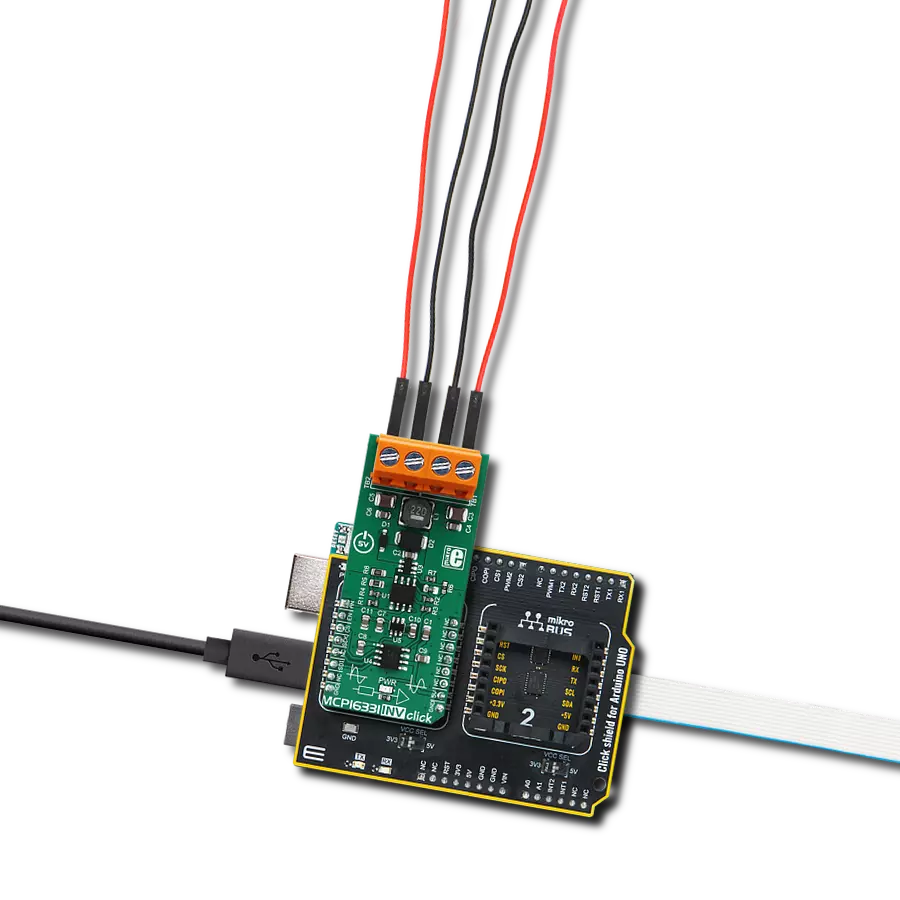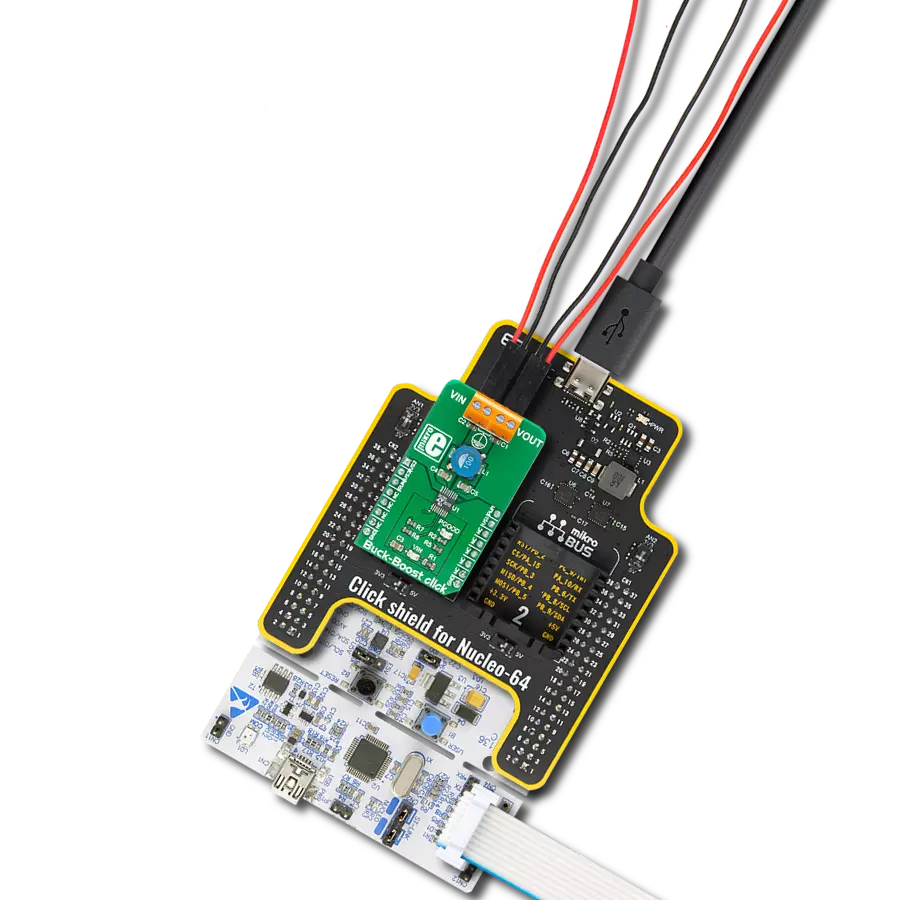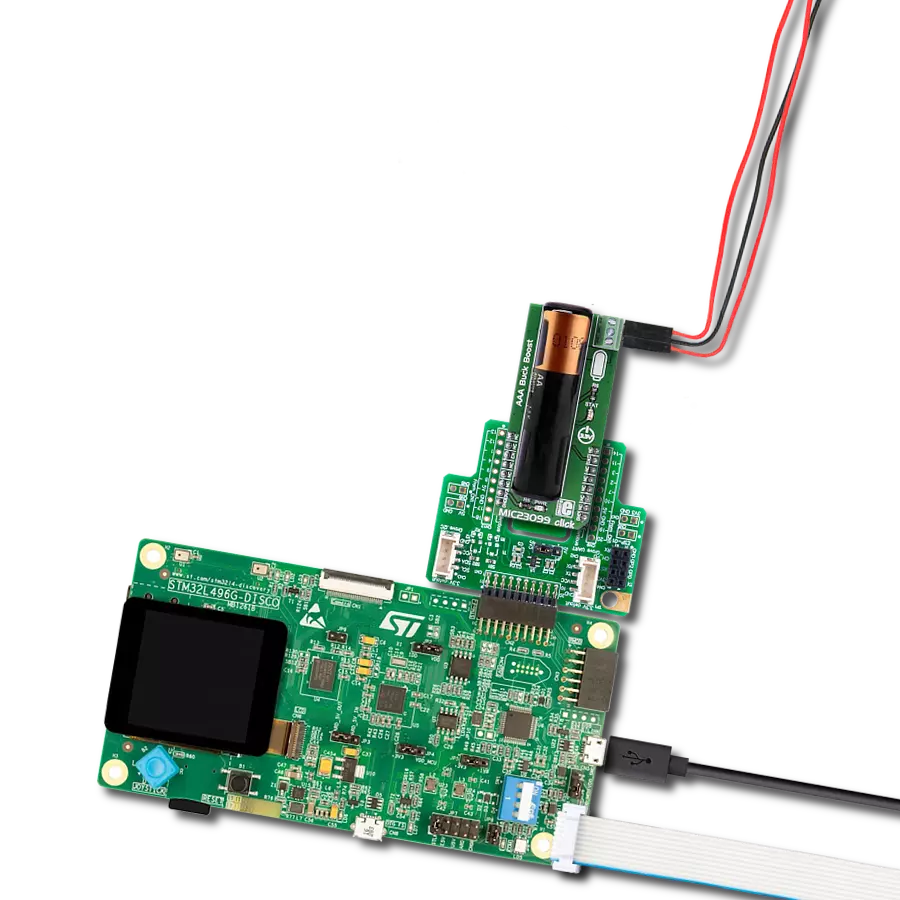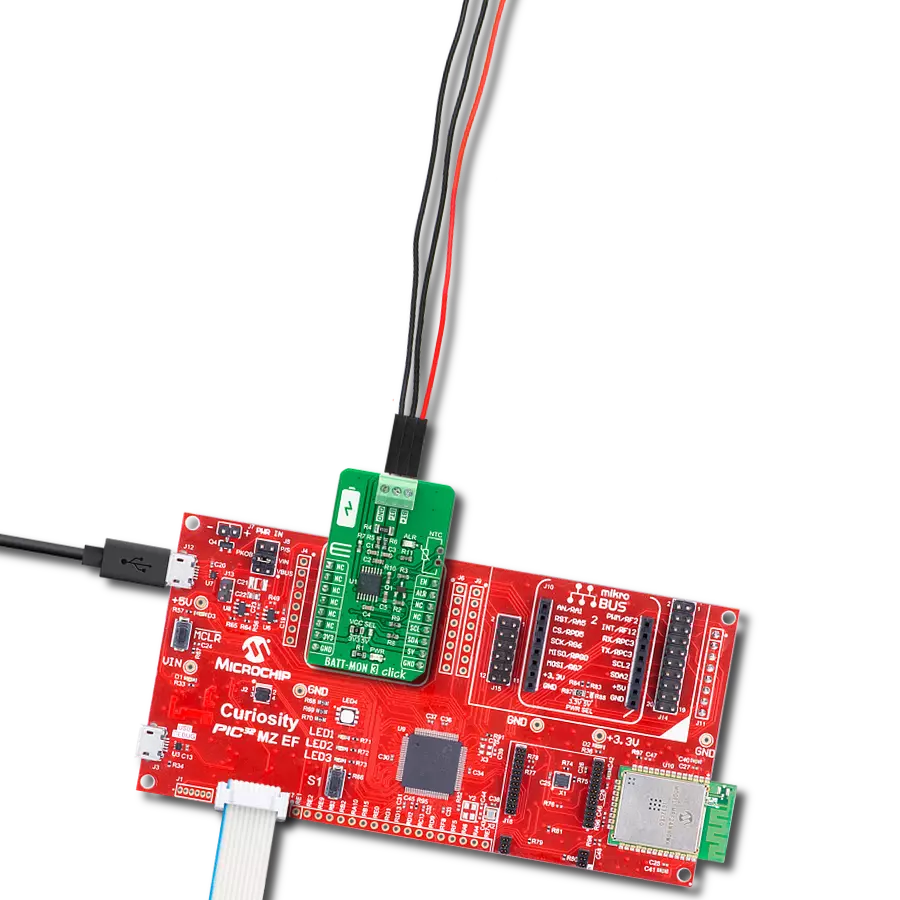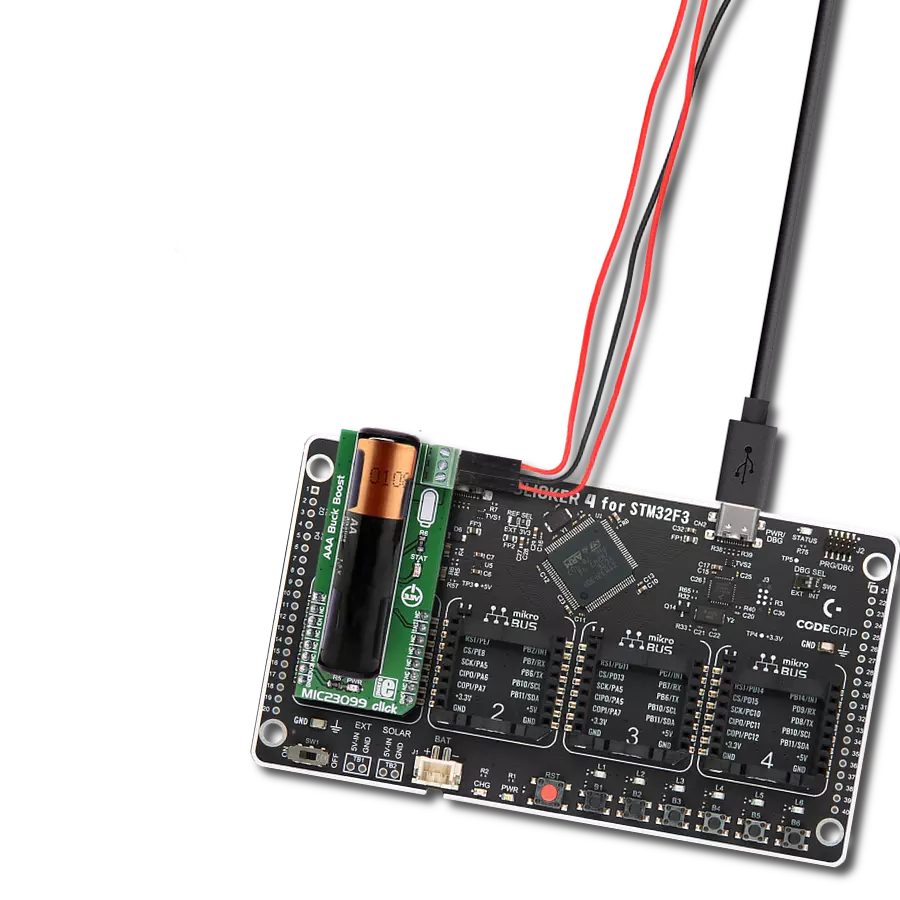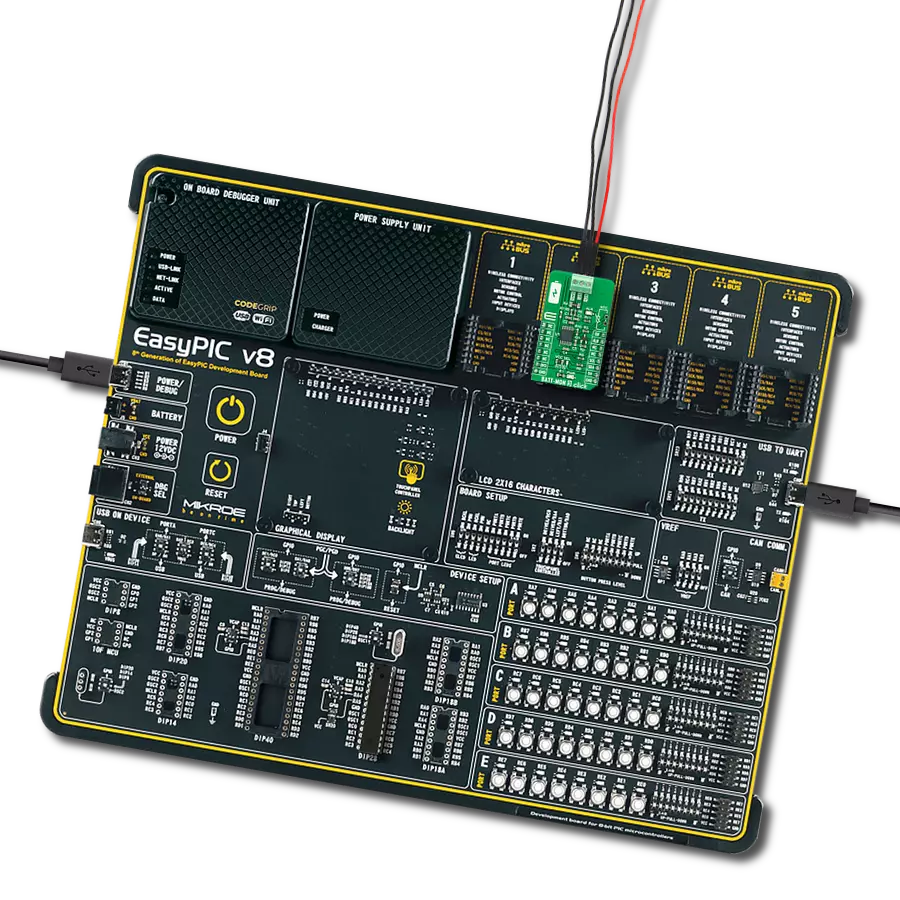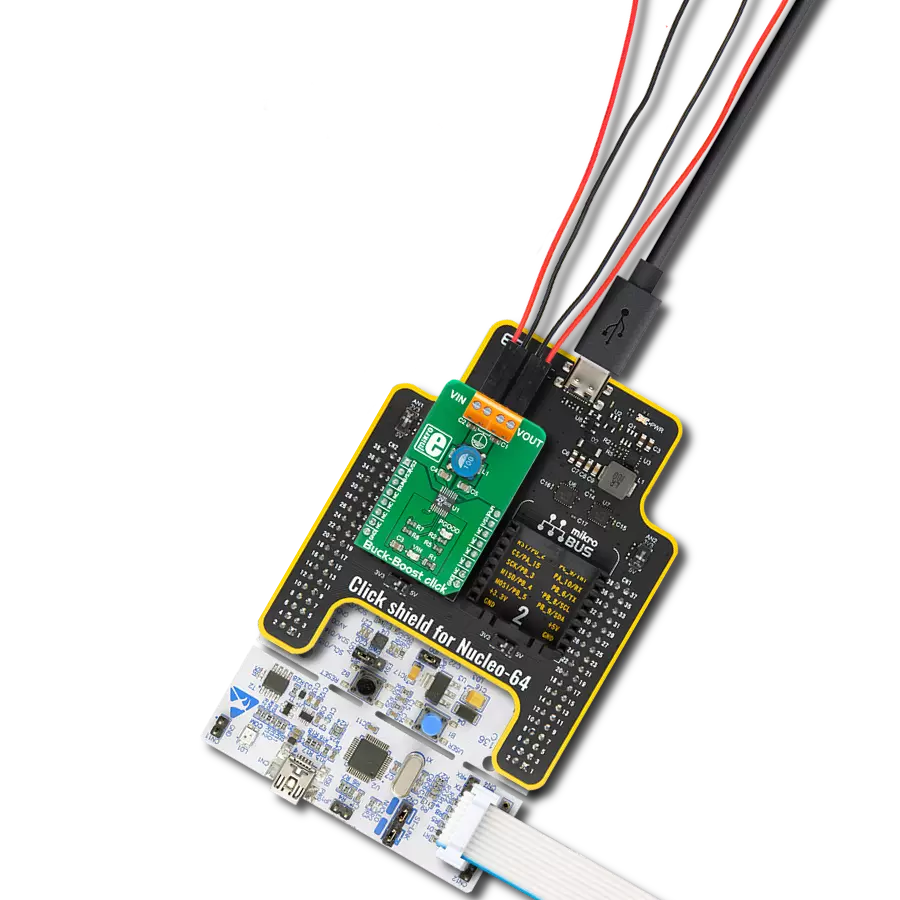Ensure precise charging, safeguard against overcharging and overheating, and monitor battery health in real time
A
A
Hardware Overview
How does it work?
BATT-MAN 2 Click is based on the MAX77654, a highly-integrated battery charging and power management solution for low-power applications from Analog Devices. It features a single-inductor, multiple-output (SIMO) buck-boost regulator efficiently that provides three independently programmable power rails available on onboard terminals labeled VSB0, VSB1, and VSB2. Also, it has one 100mA LDO output, labeled as VLDO, with ripple rejection for audio and other noise-sensitive applications. This LDO output can also be configured as a load switch to manage power consumption by disconnecting external blocks when not required. The LDO output can be activated/deactivated by populating the JP2 onboard jumper. The MAX77654 also has an integrated highly-configurable linear charger that supports a wide range of Li+ battery capacities with a wide range of charge current and charger termination voltage options, featuring battery temperature monitoring for additional safety (JEITA). The charger feature is OFF when the CHG
supply is invalid (supply range from 4.1V up to 7.25V), disabled, or with a fresh battery. In addition to all the output terminals on this board, another one is marked with VSYS, the system power output terminal. In addition to providing power to the system resources and the device's control logic, VSYS is also designed for external use. BATT-MAN 2 Click communicates with MCU using the standard I2C 2-Wire interface for configuring and checking the device's status. Since the sensor for operation requires a 1.8V logic voltage level to work correctly, a small regulating LDO is used, the ADP160 from Analog Devices, providing a 1.8V out of mikroBUS™ rails. That's why the voltage-level translator is also featured. The I2C interface bus lines are routed to the dual bidirectional voltage-level translator, allowing this Click board™ to work properly with 3.3V and 5V MCUs. An onboard switch labeled as ENABLE primarily generates a wake-up signal for the PMIC that turns ON the regulators by setting the switch to an appropriate position marked as 1 or 0. In addition, this Click
board™ also has some additional features, such as a Reset routed to the RST pin on the mikroBUS™ socket used to hold the processor in a Reset state when the device is powered down. It also uses an interrupt pin, the INT pin of the mikroBUS™ socket, to signal an essential change in device status, while the three additional LED indicators, red, yellow, and blue LEDs labeled as LED2, LED3, and LED4, can be used for optional user-configurable visual indication. Besides, this device includes an analog multiplexer (AMX), routed to the AN pin on the mikroBUS™ socket, that switches several internal voltage and current signals to an external node for monitoring with an external ADC. This Click board™ can operate with either 3.3V or 5V logic voltage levels selected via the VCC SEL jumper. This way, both 3.3V and 5V capable MCUs can use the communication lines properly. Also, this Click board™ comes equipped with a library containing easy-to-use functions and an example code that can be used, as a reference, for further development.
Features overview
Development board
Nucleo-64 with STM32L073RZ MCU offers a cost-effective and adaptable platform for developers to explore new ideas and prototype their designs. This board harnesses the versatility of the STM32 microcontroller, enabling users to select the optimal balance of performance and power consumption for their projects. It accommodates the STM32 microcontroller in the LQFP64 package and includes essential components such as a user LED, which doubles as an ARDUINO® signal, alongside user and reset push-buttons, and a 32.768kHz crystal oscillator for precise timing operations. Designed with expansion and flexibility in mind, the Nucleo-64 board features an ARDUINO® Uno V3 expansion connector and ST morpho extension pin
headers, granting complete access to the STM32's I/Os for comprehensive project integration. Power supply options are adaptable, supporting ST-LINK USB VBUS or external power sources, ensuring adaptability in various development environments. The board also has an on-board ST-LINK debugger/programmer with USB re-enumeration capability, simplifying the programming and debugging process. Moreover, the board is designed to simplify advanced development with its external SMPS for efficient Vcore logic supply, support for USB Device full speed or USB SNK/UFP full speed, and built-in cryptographic features, enhancing both the power efficiency and security of projects. Additional connectivity is
provided through dedicated connectors for external SMPS experimentation, a USB connector for the ST-LINK, and a MIPI® debug connector, expanding the possibilities for hardware interfacing and experimentation. Developers will find extensive support through comprehensive free software libraries and examples, courtesy of the STM32Cube MCU Package. This, combined with compatibility with a wide array of Integrated Development Environments (IDEs), including IAR Embedded Workbench®, MDK-ARM, and STM32CubeIDE, ensures a smooth and efficient development experience, allowing users to fully leverage the capabilities of the Nucleo-64 board in their projects.
Microcontroller Overview
MCU Card / MCU
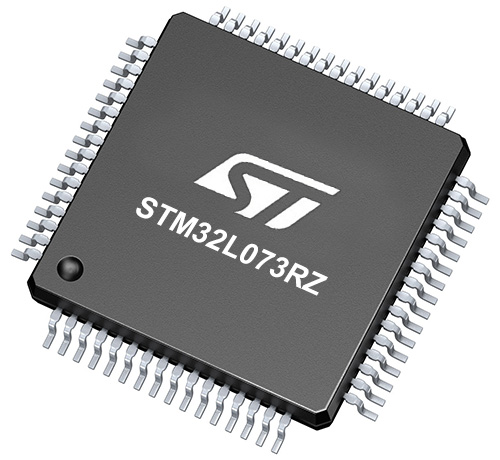
Architecture
ARM Cortex-M0
MCU Memory (KB)
192
Silicon Vendor
STMicroelectronics
Pin count
64
RAM (Bytes)
20480
You complete me!
Accessories
Click Shield for Nucleo-64 comes equipped with two proprietary mikroBUS™ sockets, allowing all the Click board™ devices to be interfaced with the STM32 Nucleo-64 board with no effort. This way, Mikroe allows its users to add any functionality from our ever-growing range of Click boards™, such as WiFi, GSM, GPS, Bluetooth, ZigBee, environmental sensors, LEDs, speech recognition, motor control, movement sensors, and many more. More than 1537 Click boards™, which can be stacked and integrated, are at your disposal. The STM32 Nucleo-64 boards are based on the microcontrollers in 64-pin packages, a 32-bit MCU with an ARM Cortex M4 processor operating at 84MHz, 512Kb Flash, and 96KB SRAM, divided into two regions where the top section represents the ST-Link/V2 debugger and programmer while the bottom section of the board is an actual development board. These boards are controlled and powered conveniently through a USB connection to program and efficiently debug the Nucleo-64 board out of the box, with an additional USB cable connected to the USB mini port on the board. Most of the STM32 microcontroller pins are brought to the IO pins on the left and right edge of the board, which are then connected to two existing mikroBUS™ sockets. This Click Shield also has several switches that perform functions such as selecting the logic levels of analog signals on mikroBUS™ sockets and selecting logic voltage levels of the mikroBUS™ sockets themselves. Besides, the user is offered the possibility of using any Click board™ with the help of existing bidirectional level-shifting voltage translators, regardless of whether the Click board™ operates at a 3.3V or 5V logic voltage level. Once you connect the STM32 Nucleo-64 board with our Click Shield for Nucleo-64, you can access hundreds of Click boards™, working with 3.3V or 5V logic voltage levels.
Used MCU Pins
mikroBUS™ mapper
Take a closer look
Click board™ Schematic

Step by step
Project assembly
Software Support
Library Description
This library contains API for BATT-MAN 2 Click driver.
Key functions:
battman2_set_charger_enable- BATT-MAN 2 set charger enable functionbattman2_set_charger_cfg- BATT-MAN 2 set charger configuration functionbattman2_get_charger_cfg- BATT-MAN 2 get charger configuration function
Open Source
Code example
The complete application code and a ready-to-use project are available through the NECTO Studio Package Manager for direct installation in the NECTO Studio. The application code can also be found on the MIKROE GitHub account.
/*!
* @file main.c
* @brief BATTMAN2 Click example
*
* # Description
* This library contains API for BATT-MAN 2 Click driver.
* The library initializes and defines the I2C bus drivers
* to write and read data from registers.
* The library also includes a function for configuring appropriate charge current,
* charge voltage, prequalification voltage,
* Buck, Buck-Boost and Linear regulator configuration, etc.
*
* The demo application is composed of two sections :
*
* ## Application Init
* The initialization of the I2C module, log UART, and additional pins.
* After the driver inits and executes a default configuration,
* the app disables charging, sets charger configuration,
* enables charging, displays charger configuration,
* or sets Buck-Boost configuration.
*
* ## Application Task
* This is an example that shows the use of a BATT-MAN 2 Click board™.
* The choice of example profile tasks depends on uncommented code.
* Examples profile: CHARGER and BUCK-BOOST.
* In the CHARGER profile, while on the BATT-MAN 2 Click board™ the
* blue LED is the battery charging indicator,
* while the red LED indicates the cessation of battery charging.
* The yellow LED is an indicator of the BUCK-BOOST profile.
* Results are being sent to the USART terminal where the user can track their changes.
*
* ## Additional Function
* - static void display_charger_status ( void )
* - static void display_sbb_status ( void )
*
* @author Nenad Filipovic
*
*/
#include "board.h"
#include "log.h"
#include "battman2.h"
#define CHARGER
// #define BUCKBOOST
static battman2_t battman2;
static log_t logger;
static battman2_chg_cnfg_t chg_cfg;
static battman2_stat_chg_t chg_stat;
static battman2_sbb_cnfg_t sbb_cfg;
static uint8_t sbb_sel;
static void display_charger_status ( void )
{
log_printf( &logger, " Charger Details :\r\n" );
if ( chg_stat.chg_dtls == BATTMAN2_CHG_DTLS_OFF )
{
log_printf( &logger, "\tOff.\r\n" );
}
if ( chg_stat.chg_dtls == BATTMAN2_CHG_DTLS_PREQUALIFICATION_MODE )
{
log_printf( &logger, "\tPrequalification mode.\r\n" );
}
if ( chg_stat.chg_dtls == BATTMAN2_CHG_DTLS_FAST_CHARGE_CONSTANT_CURRENT )
{
log_printf( &logger, "\tFast-charge constant-current (CC) mode.\r\n" );
}
if ( chg_stat.chg_dtls == BATTMAN2_CHG_DTLS_JEITA_MODIFIED_FAST_CHRG_CC )
{
log_printf( &logger, "\tJEITA modified fast-charge constantcurrent mode.\r\n" );
}
if ( chg_stat.chg_dtls == BATTMAN2_CHG_DTLS_FAST_CHARGE_CONSTANT_VOLTAGE )
{
log_printf( &logger, "\tFast-charge constant-voltage (CV) mode.\r\n" );
}
if ( chg_stat.chg_dtls == BATTMAN2_CHG_DTLS_JEITA_MODIFIED_FAST_CHRG_CV )
{
log_printf( &logger, "\tJEITA modified fast-charge constant voltage (CV) mode.\r\n" );
}
if ( chg_stat.chg_dtls == BATTMAN2_CHG_DTLS_TOP_OFF_MODE )
{
log_printf( &logger, "\tTop-off mode.\r\n" );
}
if ( chg_stat.chg_dtls == BATTMAN2_CHG_DTLS_JEITA_MODIFIED_TOP_OFF_MODE )
{
log_printf( &logger, "\tJEITA modified top-off mode.\r\n" );
}
if ( chg_stat.chg_dtls == BATTMAN2_CHG_DTLS_DONE )
{
log_printf( &logger, "\tDone.\r\n" );
}
if ( chg_stat.chg_dtls == BATTMAN2_CHG_DTLS_JEITA_MODIFIED_DONE )
{
log_printf( &logger, "\tJEITA modified done.\r\n" );
}
if ( chg_stat.chg_dtls == BATTMAN2_CHG_DTLS_PREQUALIFICATION_TIMER_FAULT )
{
log_printf( &logger, "\tPrequalification timer fault.\r\n" );
}
if ( chg_stat.chg_dtls == BATTMAN2_CHG_DTLS_FAST_CHARGE_TIMER_FAULT )
{
log_printf( &logger, "\tFast-charge timer fault.\r\n" );
}
if ( chg_stat.chg_dtls == BATTMAN2_CHG_DTLS_BATTERY_TEMPERATURE_FAULT )
{
log_printf( &logger, "\tBattery temperature fault.\r\n" );
}
log_printf( &logger, " Quick Charger Status :\r\n" );
if ( chg_stat.chg == BATTMAN2_CHG_NO_CHARGING )
{
log_printf( &logger, "\tCharging is not happening.\r\n" );
battman2_set_gpio_output( &battman2, BATTMAN2_SEL_LED_RED, BATTMAN2_PIN_STATE_ON );
battman2_set_gpio_output( &battman2, BATTMAN2_SEL_LED_YELLOW, BATTMAN2_PIN_STATE_OFF );
battman2_set_gpio_output( &battman2, BATTMAN2_SEL_LED_BLUE, BATTMAN2_PIN_STATE_OFF );
}
if ( chg_stat.chg == BATTMAN2_CHG_CHARGING )
{
log_printf( &logger, "\tCharging is happening.\r\n" );
battman2_set_gpio_output( &battman2, BATTMAN2_SEL_LED_RED, BATTMAN2_PIN_STATE_OFF );
battman2_set_gpio_output( &battman2, BATTMAN2_SEL_LED_YELLOW, BATTMAN2_PIN_STATE_OFF );
battman2_set_gpio_output( &battman2, BATTMAN2_SEL_LED_BLUE, BATTMAN2_PIN_STATE_ON );
}
log_printf( &logger, "-----------------------------------------------\r\n" );
}
static void display_sbb_status ( void )
{
log_printf( &logger, "\tSBB Channel : VSB-%d\r\n", ( uint16_t ) sbb_sel );
log_printf( &logger, "\tOperation Mode :" );
if ( sbb_cfg.op_mode == BATTMAN2_OP_MODE_BUCK_AND_BOOST )
{
log_printf( &logger, " Buck-boost mode.\r\n" );
}
if ( sbb_cfg.op_mode == BATTMAN2_OP_MODE_BUCK )
{
log_printf( &logger, " Buck mode.\r\n" );
}
log_printf( &logger, "\tCurrent Limit :" );
if ( sbb_cfg.current_limit == BATTMAN2_CURRENT_LIMIT_1000_mA )
{
log_printf( &logger, " 1.000 A\r\n" );
}
if ( sbb_cfg.current_limit == BATTMAN2_CURRENT_LIMIT_750_mA )
{
log_printf( &logger, " 0.750 A\r\n" );
}
if ( sbb_cfg.current_limit == BATTMAN2_CURRENT_LIMIT_500_mA )
{
log_printf( &logger, " 0.500 A\r\n" );
}
if ( sbb_cfg.current_limit == BATTMAN2_CURRENT_LIMIT_333_mA )
{
log_printf( &logger, " 0.333 A\r\n" );
}
log_printf( &logger, "\tOutput Voltage : %.3f V\r\n", sbb_cfg.output_vtg );
log_printf( &logger, "-----------------------------------------------\r\n" );
}
void application_init ( void )
{
log_cfg_t log_cfg; /**< Logger config object. */
battman2_cfg_t battman2_cfg; /**< Click config object. */
/**
* Logger initialization.
* Default baud rate: 115200
* Default log level: LOG_LEVEL_DEBUG
* @note If USB_UART_RX and USB_UART_TX
* are defined as HAL_PIN_NC, you will
* need to define them manually for log to work.
* See @b LOG_MAP_USB_UART macro definition for detailed explanation.
*/
LOG_MAP_USB_UART( log_cfg );
log_init( &logger, &log_cfg );
log_info( &logger, " Application Init " );
// Click initialization.
battman2_cfg_setup( &battman2_cfg );
BATTMAN2_MAP_MIKROBUS( battman2_cfg, MIKROBUS_1 );
err_t init_flag = battman2_init( &battman2, &battman2_cfg );
if ( I2C_MASTER_ERROR == init_flag )
{
log_error( &logger, " Application Init Error. " );
log_info( &logger, " Please, run program again... " );
for ( ; ; );
}
battman2_default_cfg ( &battman2 );
log_info( &logger, " Application Task " );
Delay_ms ( 100 );
battman2_set_charger_enable( &battman2, BATTMAN2_SET_CHARGER_DISABLE );
Delay_ms ( 100 );
#ifdef CHARGER
log_printf( &logger, "-----------------------------------------------\r\n" );
log_printf( &logger, " Example: CHARGER \r\n" );
chg_cfg.thm_hot = BATTMAN2_THM_HOT_411_mV;
chg_cfg.thm_warm = BATTMAN2_THM_WARM_511_mV;
chg_cfg.thm_cool = BATTMAN2_THM_COOL_747_mV;
chg_cfg.thm_cold = BATTMAN2_THM_COLD_867_mV;
chg_cfg.vchgin_min = 4.2;
chg_cfg.ichgin_lim = 95.0;
chg_cfg.i_pq = BATTMAN2_I_PQ_10_PERCENTAGE;
chg_cfg.chg_pq = 3.0;
chg_cfg.i_term = BATTMAN2_I_TERM_5_PERCENTAGE;
chg_cfg.t_topoff = BATTMAN2_T_TOPOFF_0_MIN;
chg_cfg.tj_reg = BATTMAN2_TJ_REG_60_C;
chg_cfg.vsys_reg = 4.100;
chg_cfg.chg_cc = 112.5;
chg_cfg.t_fast_chg = BATTMAN2_T_FAST_CHG_TIMER_7_HOURS;
chg_cfg.chg_cc_jeita = 15.0;
chg_cfg.thm_en = BATTMAN2_THM_EN_THERMISTOR_DISABLED;
chg_cfg.chg_cv = 3.775;
chg_cfg.usbs = BATTMAN2_USBS_CHGIN_IS_NOT_SUSPENDED;
chg_cfg.chg_cv_jeita = 3.6;
chg_cfg.imon_dischg_scale = BATTMAN2_IMON_DISCHG_SCALE_300_mA;
chg_cfg.mux_sel = BATTMAN2_MUX_SEL_MULTIPLEXER_DISABLED;
battman2_set_charger_cfg( &battman2, chg_cfg );
Delay_ms ( 100 );
battman2_set_charger_enable( &battman2, BATTMAN2_SET_CHARGER_ENABLE );
Delay_ms ( 100 );
#endif
#ifdef BUCKBOOST
log_printf( &logger, "-----------------------------------------------\r\n" );
log_printf( &logger, " Example: BUCK-BOOST \r\n" );
sbb_sel = BATTMAN2_SBB_CH_1;
sbb_cfg.output_vtg = 5.5;
sbb_cfg.op_mode = BATTMAN2_OP_MODE_BUCK_AND_BOOST;
sbb_cfg.current_limit = BATTMAN2_CURRENT_LIMIT_500_mA;
sbb_cfg.active_discharge_enable = BATTMAN2_ACTIVE_DISCHARGE_ENABLE;
sbb_cfg.enable_control = BATTMAN2_ENABLE_CONTROL_ON_IRRESPECTIVE_FPS;
sbb_cfg.ichgin_lim_def = BATTMAN2_ICHGIN_LIM_95_mA;
sbb_cfg.drv_sbb = BATTMAN2_DRV_SBB_FAST_TRANSITION_TIME;
battman2_set_sbb_config( &battman2, sbb_sel, sbb_cfg );
log_printf( &logger, "-----------------------------------------------\r\n" );
battman2_set_gpio_output( &battman2, BATTMAN2_SEL_LED_RED, BATTMAN2_PIN_STATE_OFF );
battman2_set_gpio_output( &battman2, BATTMAN2_SEL_LED_YELLOW, BATTMAN2_PIN_STATE_ON );
battman2_set_gpio_output( &battman2, BATTMAN2_SEL_LED_BLUE, BATTMAN2_PIN_STATE_OFF );
Delay_ms ( 1000 );
#endif
}
void application_task ( void )
{
#ifdef CHARGER
battman2_get_chg_status( &battman2, &chg_stat );
Delay_ms ( 10 );
display_charger_status( );
Delay_ms ( 1000 );
battman2_get_charger_cfg( &battman2, &chg_cfg );
log_printf( &logger, " Fast-charge constant current value : %.1f mA\r\n", chg_cfg.chg_cc );
log_printf( &logger, " Minimum CHGIN Regulation Voltage : %.3f V\r\n", chg_cfg.vchgin_min );
log_printf( &logger, " Battery Prequalific. Voltage Thld : %.3f V\r\n", chg_cfg.chg_pq );
log_printf( &logger, " System Voltage Regulation : %.3f V\r\n", chg_cfg.vsys_reg );
log_printf( &logger, " JEITA Ifast-chg-jeita : %.2f mA\r\n", chg_cfg.chg_cc_jeita );
log_printf( &logger, " Fast-charge battery Vreg : %.3f V\r\n", chg_cfg.chg_cv );
log_printf( &logger, " Vfast-chg-jeita : %.3f V\r\n", chg_cfg.chg_cv_jeita );
log_printf( &logger, "-----------------------------------------------\r\n" );
Delay_ms ( 1000 );
#endif
#ifdef BUCKBOOST
battman2_get_sbb_config( &battman2, sbb_sel, &sbb_cfg );
Delay_ms ( 10 );
display_sbb_status( );
Delay_ms ( 1000 );
#endif
}
int main ( void )
{
/* Do not remove this line or clock might not be set correctly. */
#ifdef PREINIT_SUPPORTED
preinit();
#endif
application_init( );
for ( ; ; )
{
application_task( );
}
return 0;
}
// ------------------------------------------------------------------------ END
Additional Support
Resources
Category:Buck-Boost



















